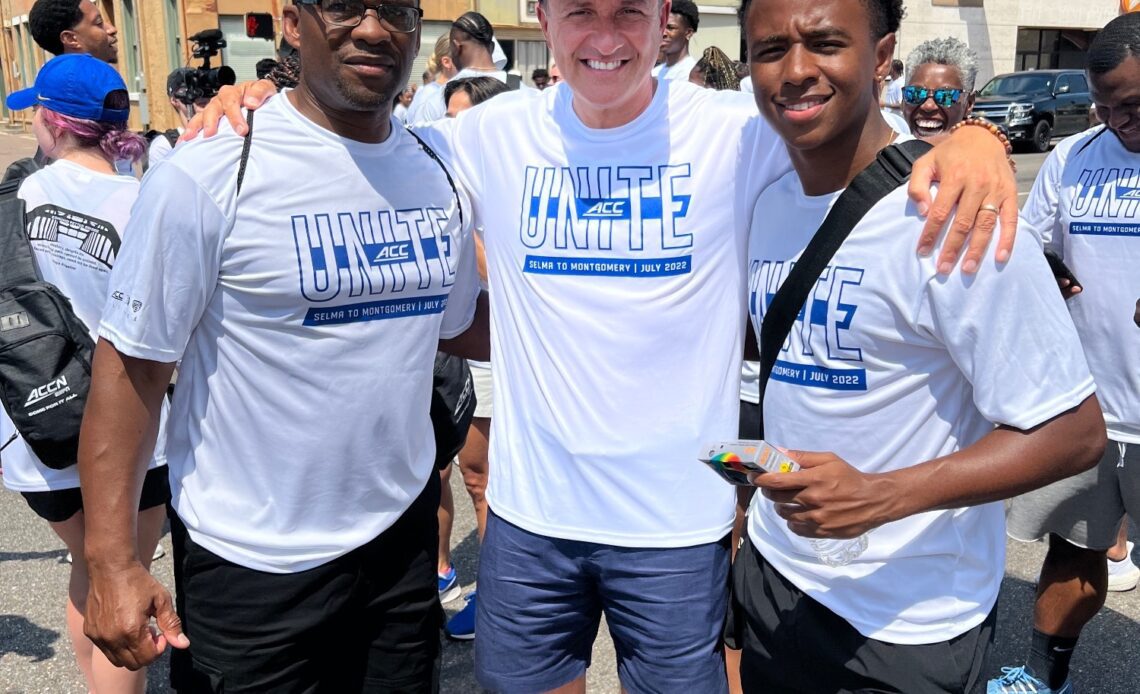Black History Month: Wake Forest Athletics will have many stories and content throughout Black History Month on GoDeacs.com and through all team social media accounts. Information and profiles shared are archived here.
Last summer, Wake Forest men’s soccer junior Chase Oliver had the distinction of being selected to the ACC’s traveling delegation to Selma and Montgomery, Ala., where the 48 student-athletes and administrators across the league’s 15 member institutions took part in a three-day immersive journey to one of the centers of the Civil Rights Movement as part of ACC UNITE.
After connecting with Wake Forest Associate Athletic Director for Community and Alumni Relations Dwight Lewis about joining him for the experience, Oliver knew it was a trip he wanted to take.
“This specific trip was a big one in particular because it combined the ACC, the Big Ten and the PAC 12. So I already knew this was a big opportunity,” Oliver said. “To get a great experience like that is not something that everyone gets to come in contact with. Whether it be the museums or the people that we met from the marches from back then. So as soon as I heard I said yes, absolutely.”
During the three days in Alabama, Oliver’s social justice experience included hearing from Sheyann Webb-Christburg, visiting the Interpretive Center at Alabama State University, the Civil Rights Memorial Center, the Alabama Department of Archives and History, the award-winning Equal Justice Initiative (EJI) Legacy Museum and the First Baptist Church, the headquarters for the Dallas County Voters League, which was the student nonviolent coordination committee.
Also known as “The Movement Church,” it is where hundreds of students began their days’ long journey from Selma to Montgomery in 1965.
“To hear from [Sheyann Webb-Christburg] and get her perspective on what happened and how impactful it was was just really impressive,” Oliver said. “Then to leave First Baptist Church and walk over to the Edmund Pettus Bridge and across, that’s where the confrontation began. So we were going through a city which hasn’t changed much, it’s a very historical city. They haven’t really put in any restaurants and there’s been no gentrification, nothing like that. Seeing that was grounding and emotional for a lot of people. It was certainly emotional for me.”
The Edmund Pettus Bridge was the site…
Click Here to Read the Full Original Article at Wake Forest University Athletics…

